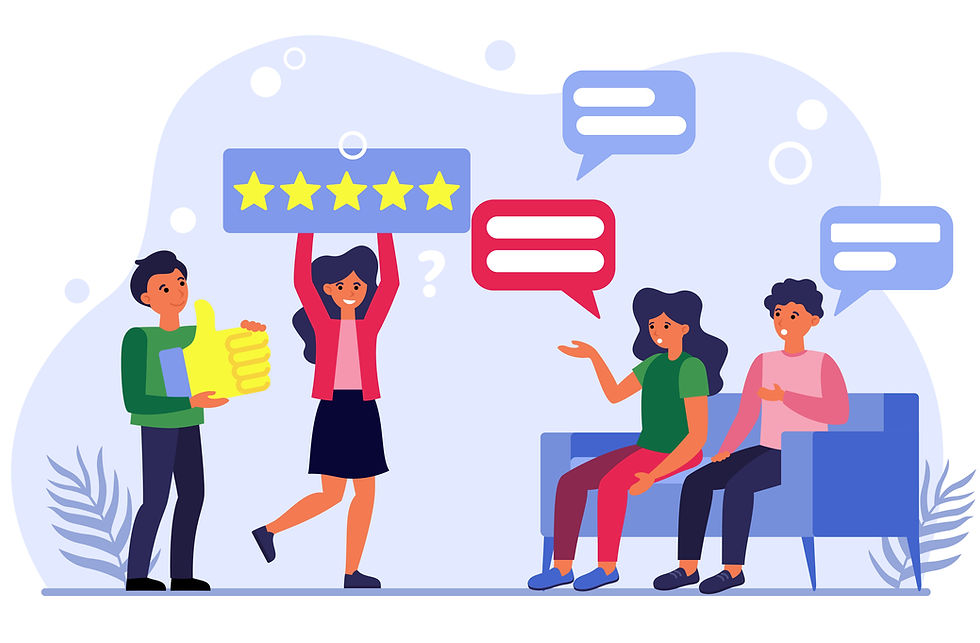What I Learned From Being a Student in an Online Asynchronous Class
- Rina Deshpande
- Oct 29
- 3 min read

Online asynchronous learning is a common course model in higher education. According to the National Center for Education Statistics (n.d.), over 50% of students were enrolled in online or “distance” learning in 2024. Typically, students in an online asynchronous course access course materials, complete assignments, and participate in activities on their own schedules rather than meet synchronously as a class online.
A few years ago, I enrolled as a student in a 12-week online asynchronous science course in Medical Terminology at a local college. Although I already had my undergraduate and graduate degrees, I registered as a non-credit student for two reasons: (1) for my own enjoyment, and (2) to inform my work as a professional learning designer by "sitting in the seat" of the student.
Here are my reflections on six critical course elements based on my experiences and motivations as a working professional:
Accessibility and flexibility: As a working professional, I was able to enroll in this course because the online asynchronous modality made it accessible. I successfully completed the requirements of this course — weekly readings, online discussion board assignments, responding to peers, quizzes, and exams — before and after work hours.
Clear, predictable expectations: I enjoyed having a consistent rhythm of due dates that was designed to set me up for success rather than create surprises. My professor graded our participation twice weekly and posted reminder announcements. Each Thursday by 11:59pm, we completed readings and a discussion board reflection, including responding to two fellow students’ posts. Each Sunday by 11:59pm, we had a related auto-scored quiz. We had one midterm exam and one final exam. I always understood what was due and when, and could plan my schedule accordingly.
Quality readings: The majority of my learning came from assigned readings. Our professor selected different sources, such as science journals, recent news publications, and a textbook. The online Pearson science textbook for this course included adaptive self-checks during and after every chapter reading. Concepts I misunderstood were given more practice opportunities for “mastery,” automatically personalizing my learning and retention.
Professor connection: It was tough to get to know my professor and understand her feedback style. She was a busy working healthcare provider and an adjunct professor, and her preference was to communicate by email. Though I appreciated her email responses within 24 hours, if I could have attended regular optional office hours to talk with my professor on Zoom, I would have better understood her written constructive feedback, had the chance to ask questions, and redirect my work on future assignments.
Active learning opportunities: In science, memorization is certainly a foundational part of the curriculum, but I would have loved more critical thinking and innovation opportunities. In this online asynchronous course, the majority of learning activities entailed readings, textbook-based quizzes, and online discussion board reflections. While I appreciated the predictable structure without any “gotchas,” by the end I struggled to stay motivated (in spite of loving the practical content). Varying our weekly assignments with active learning opportunities, such as taking on a personified ‘role’ of a science topic like a human skin cell’s journey, would have enhanced my conceptual understanding and engaged me in creative ways.
Collaborative opportunities: Aside from completing discussion board responses to fellow classmates’ posts, I had limited interaction with my peers. Being an online asynchronous course, I did not expect required whole-class meeting times, but occasional virtual partner activities such as co-developing an artistic representation of a concept or a creating a student-led Q+A forum (known as a “parking lot”) would have helped me connect with and learn from my peers.
Stepping outside of my usual role as educator and back into the seat of the learner helped me to know first-hand what bolstered my learning and what hindered it. Although my experiences can’t be generalized for all students, keeping in mind the lived experiences of all our students can help educators to design inspiring, engaging online asynchronous courses.
References
National Center for Education Statistics. (n.d.). Trend Generator: Table 2.42 [Data table]. U.S. Department of Education. Retrieved September 8, 2025, from https://nces.ed.gov/ipeds/TrendGenerator/app/build-table/2/42?rid=1&cid=57
Image credit: OpenAI, 2025



Comments